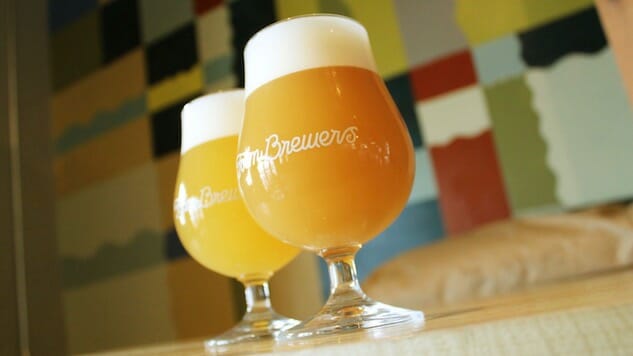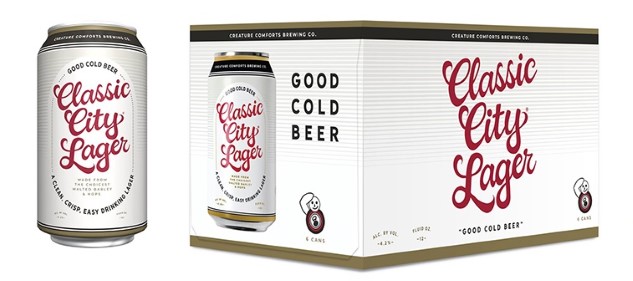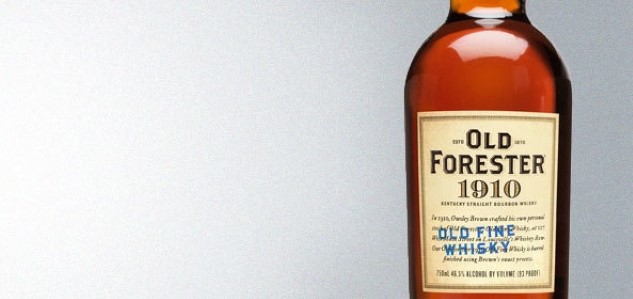
2018 was a weird year, as a drinker—and as a person who writes about the craft beer and spirits industries.
It was a year when several fads within the beer industry reached their seemingly absurd apexes. Meanwhile, the entire industry once again slowed in its growth, foreshadowing what may be some lean years ahead for American craft brewers. As the pace of openings continues unabated despite the slowing rate of growth, how much will everyone feel the pinch?
On the liquor side of the market, it was a different story. Despite the fact that millennial consumers are drinking less, and watching their drinking habits in general more closely than the generation that preceded them, their fascination with craft culture continues to fuel innovation in the liquor-sphere. New products are still flooding the shelves. Whiskey is still booming, although aged rum and mezcal are coming on strong. There’s a growing sense of eclecticism—more drinks, based on more ingredients, served in a variety of ways.
Here, then, were the best and worst beer and liquor trends of the year.
The Best Beer and Liquor Trends of 2018
1. The Rise of “Simple” Craft Lagers
There was no bigger story in the beer industry in 2018, at least as far as beer styles are concerned, than the rise of easy-drinking lagers. It’s been absolutely fascinating to watch the industry pivot in this direction, embracing something so close to the very style that craft beer once defined itself in opposition to. And it’s a move that makes sense to finally happen, because really, when you get right down to it, these basic lagers are fundamentally delicious and refreshing. American light adjunct lagers wouldn’t still be 85 percent of the beer market if they had no charm of any kind, but this was the year that craft breweries attempted to reclaim that demographic for themselves, and improve on it if at all possible.
Led by the likes of Founders Solid Gold, which made huge in-roads and did huge sales figures, the craft beer industry proved naysayers wrong by illustrating that consumers will pay a premium to buy “basic” lagers from their local craft brewery, and pay craft prices to do so. At the same time, some breweries even seem to be using these lagers as thinly veiled devices to get consumers to sample more challenging beer styles—essentially making to-style German pilsners and simply labeling them as “lager.” The benefit, then, might be two-fold: Delicious beers, at reasonable prices, that build a whole new appreciation for hoppy lagers in an audience that has never bothered to sample them before.

2. Double Barrel Whiskeys
Oak barrels are expensive. If you run a brewery, you know this. If you run a distillery, you definitely know this. So it’s not too surprising that for many years, the thought of using more than one freshly charred barrel for a single batch of whiskey would have been deemed prohibitively expensive. But as the market for upscale brown spirits continues to grow, distillers have far more leeway for experimentation. When Woodford Reserve first debuted their Double Oaked, which ages regular Woodford Reserve inside a second, freshly charred barrel to “reinvigorate” the aging process, it was a quaint novelty.
This, however, was the year when “double-barreled” whiskeys really arrived in force, as our recent tasting of three new double-barreled whiskeys would indicate. It’s a pretty cool process, and it can have some great results when used on the right brands of whiskey, enhancing the freshly “roasty” edge of a whiskey and imparting a burst of barrel spice. And it’s not just bourbon, either—several companies are now either making or aging double-barreled ryes, which is an exciting thought. They seem popular with consumers as well—Old Forester has indicated that their double-barreled offering, Old Forester 1910 Old Fine Whisky sold phenomenally well, and may be hard to find until next summer.

3. Low-Alcohol Cocktails
As drinkers become more health-conscious, and as the cocktail revolution enters a more mature stage of its existence, the desire for low-alcohol cocktails has become increasingly pronounced. When the cocktail boom was young, stirred “up drinks” became the standard-bearers of the alternative lifestyle that cocktails represented, but modern cocktail culture is beginning to skew away from that “maximum intensity” aesthetic. Instead, lower ABV entries are showing up on cocktail lists, often in their own section, emphasizing responsible drinking without having to compromise on flavor.
In fact, the low-ABV cocktail has become its own category of sorts in some places, commonly referred to as a “suppressor.” In Atlanta, a number of restaurants have run with the concept, building around rules such as “no ingredient over 25 percent ABV.” Not only do these cocktails offer a much-needed option for a long night at the bar; they’re exploring realms of flavor that are much more novel than another twist on the Manhattan.
4. Half bottles
In the same vein, it was nice to see the half bottle of wine make some serious inroads in 2018. More of your average package stores are now stocking a selection of wine half bottles, which plays to millennial tastes in more ways than one. First, it gives drinkers a reasonable amount of wine for one or two people to consume at a weeknight dinner. Secondly it gives drinkers a greater opportunity to sample a variety of wines at around the same price—an obvious advantage when millennial consumers tend to value novelty and trying new things over consistency. As chains like Aldi, known for their cheap wine selections, begin to incorporate half bottles, you can bet we’re going to see some more growth in this segment in 2019.
The Worst Beer and Liquor Trends of 2018
1. Peak IPA Turbidity and Sweetness
Man, what a difference a year makes. When 2018 began, it still felt like the end of the honeymoon period for hazy IPAs. The warning signs were there, sure, but we were still excited almost every time we saw a new hazy IPA release roll into the Paste office. But man, did we end up being disabused of that notion.
As I wrote in this July essay on The State of IPA, we went from being excited when we saw the words “hazy” or “NE-IPA” to downright dubious. Simply put, there’s so much bad IPA out there right now. As the juicy, chewy trend in IPA took off and gained strength, built by the likes of Tree House and Trillium, so many breweries that had no business making hazy IPAs all tried to jump on board. And those beers, when not executed well, are painful to drink. Whether they’re intensely green and vegetal, astringent and corrosive in texture, or tooth-strippingly sweet and filled with overripe fruit puree, we’ve had every kind of bad hazy IPA there is throughout 2018, and it’s made us redevelop such an appreciation for well-made, crystal clear IPAs. Look no further than Green Cheek Beer Co.’s sublime Radiant Beauty, which finished at #3 out of 324 when we blind-tasted IPAs in July. Would that more modern IPAs could be like this.
This is not to say that we don’t enjoy well-made hazy IPAs. Done well, there are few things more lovely. Go through that IPA blind tasting and the majority of the finalists still have some level of haze to them. We even like the “juicy” profile as much as the next folks. But 2018 was the year when the trend got beaten into the dust by bad examples of hazy IPA, to the point that it’s made us distrust hazy offerings from any brewery we haven’t personally vetted. It’s time for a lot of these breweries to either improve their hazy offerings, or pivot to something more palatable.
2. Malted rye whiskeys
This one is pretty much just a personal pet peeve, but one that seems to keep recurring in the whiskeys I sampled in 2018. It boils down to one thing: The presence of malted rye.
In classical American rye whiskeys, the grain being used is standard, unmalted rye. Think of just about any rye you’ve ever had, whether it’s the Beam “51 percent rye” style or the MGP 95 percent rye that has become so popular, and the peppery “rye spice” and fruity characteristics are derived from that unmalted rye. For whatever reason, though, it seems as if adding some percentage of malted rye to the mashbill has become increasingly popular, especially for independent micro-distillers. And frankly, it’s ruining some otherwise tasty whiskeys for me.
In these whiskeys, the malted rye tends to invariably present (to my palate, anyway) with an overwhelming “bready” or “yeasty” note that is immediately distinctive. I’ve had whiskeys that used it in great quantity, and ones that used only 10 or 20 percent malted rye, but the result has always been the same—nuance and other classic rye flavors covered up under that sole doughy note. It makes me wonder how much differently other palates may be perceiving the flavor of the malted rye.
As for me, I’m simply not a fan. I get that these craft distillers are trying to make a more distinctive product by using less popular grains, and in the process justify a higher price point, but I would be perfectly happy to drink more classical, young rye whiskeys from these distilleries.
3. Peak Pastry Stout
File this one right alongside the IPA entry above, and just swap in “pastry stout” in most applications, and the majority of the same criticisms apply. The concept of big, sweet imperial stouts with lots of adjuncts was by no means new in 2018, but this was the year when these beers fully jumped the shark.
As I recently wrote in my essay bemoaning the downfall and relative endangered status of non-adjunct American stouts, these beers have sadly come to replace the entire concept of “stout” in the minds of many drinkers, and it’s doing what could be irreparable damage to the conception of the style. If consumers are always picturing a 14 percent ABV beer with vanilla bean, coconut and marshmallow every time they hear “stout,” it’s only going to get harder to sell the roasty, dry, wonderfully balance and subtle beers that used to bear that title.
As with hazy IPA, it’s not as if we want to see big, crazy, adjunct-laden, barrel-aged stouts go away in their entirety, but the field has swung to being dangerously overcrowded with them. When you feel like you need half a dozen adjuncts in order to generate any kind of buzz for a can release of imperial stout, something has gone wrong. We’ve conditioned drinkers to believe that “better” means “more stuff in it” and “sweeter,” and these are going to be difficult habits to break.
4. The Contraction of Craft Beer/Closure of Beer Publications
This was a sad year for beer writers, there’s no doubt about that. Mirroring the slowing growth of the entire craft beer demographic, set against the active shrinking of the beer segment as a whole, it couldn’t help but feel like the number of outlets for beer writing suddenly grew a lot smaller. We lost the well-liked Draft Magazine and the venerable All About Beer, after 39 years of publication. Meanwhile, Celebrator and BeerAdvocate hung on, but cut back on reporting. Simply put, there’s less print space being devoted to beer at the end of 2018 than there was in the beginning, and it’s hard to not feel like that result comes as an extension of the beer industry itself ossifying.
Suffice to say, it feels like we’re entering some lean times for beer writing, but we’ll continue trying to do our best into 2019 and beyond.
Jim Vorel is a Paste staff writer and resident beer and liquor guru. You can follow him on Twitter for more drink writing.